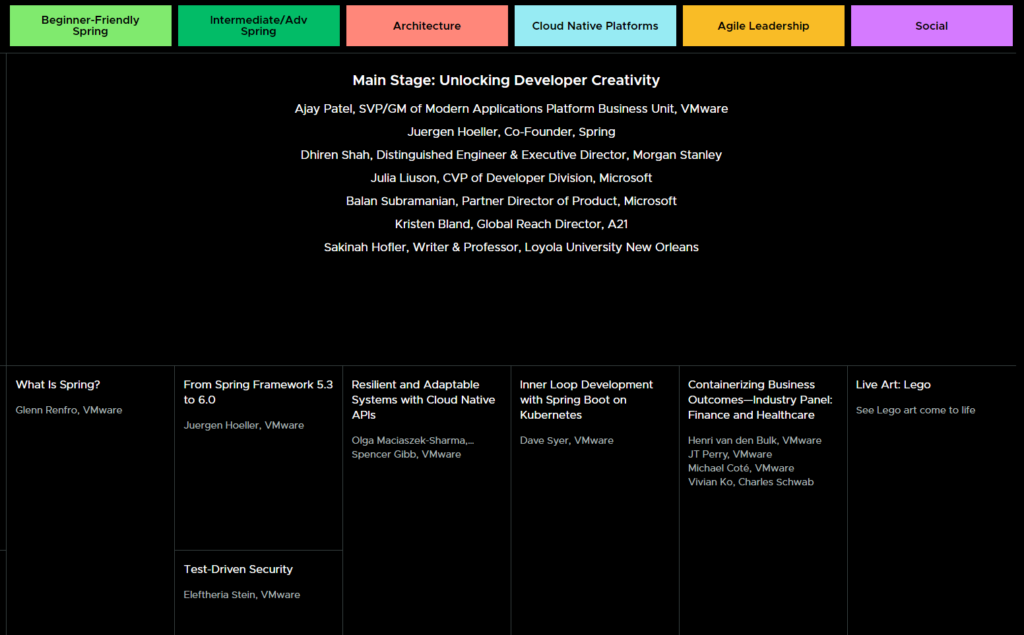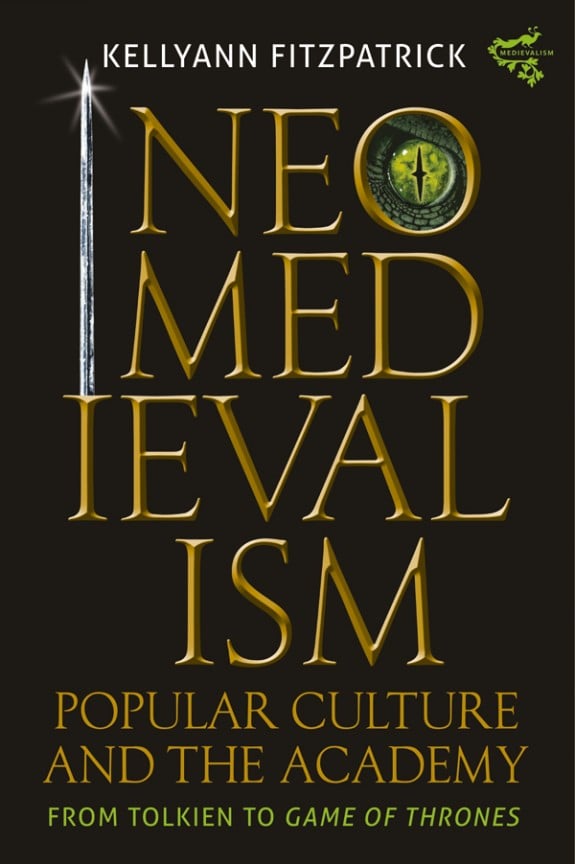Last week I managed to catch quite a bit of SpringOne: the conference devoted to Spring and run by VMware as one of the events brought via its acquisition of Pivotal.
The event had the usual tech conference mix of product announcements (e.g., the public beta of the Tanzu Application Platform), technical demos, customer stories, breakout sessions, and keynote talks, with the three mainstage sessions expertly hosted (live) by Developer Advocates Cora Iberkleid, Tiffany Jernigan, and, of course (because this is Spring!), Josh Long. This year’s theme, “Code with the flow,” spoke to the idea of coding with minimal unwanted distractions or interruptions, and focused on how both tech and processes can help get us to that state.
The talks themselves featured some solid production values, including the use of graphic overlays (rather than slides) for the keynotes, and a nicely edited and edutaining troubleshooting Spring Cloud and Tanzu demo. With related chat taking place on Slack, the event was not a completely integrated experience, but overall it followed many of the virtual tech event suggestions posited by my colleague James.
SpringOne also made good use of topic tracks, and I love when event schedule interfaces let me see at a glance what is happening on all the different tracks/stages at once, and then allow me to drop in on different tracks directly from links on the schedule.

Although talks were not available on demand immediately after they aired–meaning that you had to catch the talks in real time if you did not want to wait a few days–replays of keynotes and breakout sessions (yes, even the talks from the social track) are already available.
While this is the third SpringOne I’ve attended (and the second virtual one), I found this year’s “Code with the flow” theme to be especially relevant. At RedMonk we have been speaking extensively about the developer experience gap, which my colleague Stephen describes as a result of tooling fragmentation in which
developers are forced to borrow time from writing code and redirect it towards managing the issues associated with highly complex, multi-factor developer toolchains held together in places by duct tape and baling wire.
A number of sessions, including Ajay Patel’s Day 1 kickoff keynote, spoke to the developer experience gap and other flow disruptors directly, while other sessions focused on technical and process solutions for establishing and maintaining creative flow.
One of my favorite talks of the event (and of 2021, really) was Sakinah Hofler’s talk at the end of the Day 1 mainstage session on “Unlocking Developer Creativity” (about 47:45 in the video embedded below).
Hofler, a writer and professor at Loyola University (the one in NOLA; Hofler is also a former chemical and quality engineer) talks about refilling the “empty well” of creativity, which she argues is essential to getting into the state of flow faster. She outlines the following steps for accomplishing this:
- Turn off the outside world
- Develop a physical and mental routine
- Keep a journal
- Know when to take a break
- Know when to collaborate
- Embrace failure
To my mind–and based on my own experiences as a writer and writing instructor–each of these steps can be useful on their own, and I am not alone in finding particular value in the last step.
I allowed myself to be bad at writing/@blackquisition gets real about how to embrace “failure” as part of the creative process 😍🤩#SpringOne https://t.co/zJm0djjaTm
— DormAIn 🧟♀️ (aka "part of the problem") (@DormainDrewitz) September 1, 2021
Together, however, the steps Hofler outlines offer a potentially powerful action plan for writers of fiction, poetry, code, and blog posts alike (although it is also important to acknowledge that not all brains work the same, and these steps will not be helpful to everyone).
Notably, SpringOne 2021 and its “Code with the flow” theme was itself up against a number of external disruptors. The event ran from September 1-2: days in which the U.S. newscycle was filled with international conflict, increasingly alarming pandemic statistics, and domestic political turmoil. These days also saw a significant portion of the U.S. impacted by the effects of Hurricane Ida making its way from Louisiana up to the northeast, as well as ongoing wildfires in the west.
With most of the conference mainstage sessions pre-recorded, this means that the actual program was not affected; however, a number of speakers were affected in real time, such as Hofler, who tweeted about having to evacuate from New Orleans to Houston because of Ida (note: I am exceedingly relieved to know that Hofler made it safely out of Ida’s way):
👇🏾👇🏾👇🏾 I'm the sister who evacuated to Houston. And my sister just got rescued via boat in Jersey. Been a bit quiet bc I'm still processing. #IdaAftermath https://t.co/GRJDp6xuFP
— Sakinah Hofler (@blackquisition) September 2, 2021
For me it was almost surreal to see such a brilliant and timely talk–a talk about finding ways to be creative through disruption and failure–run like clockwork (specifically because it was pre-recorded) against the backdrop of a weather emergency that had, in real time, driven the speaker from her home and disrupted who knows how many aspects of her life, creative or otherwise.
In this way, SpringOne served as a reflection of the larger state of the tech industry as a whole, which in 2021 seems to be finding increasingly more polished ways to thrive through various simultaneous ongoing catastrophes. And yet even in such well-produced and scripted spaces, it is clear that the people who constitute the industry are dealing with disruptions ranging beyond those caused by fragmented toolchains. It was therefore a bright spot to see the SpringOne program use its polished and scripted parts to not only make it ok to acknowledge these disruptions, but to help its audience begin to find ways to not be paralyzed by them.
Disclosure: VMware is a RedMonk client, but this piece is an independent piece of analysis.
Correction: VMware’s Rita Manachi was kind enough to point out that the track sessions were delivered live.

No Comments